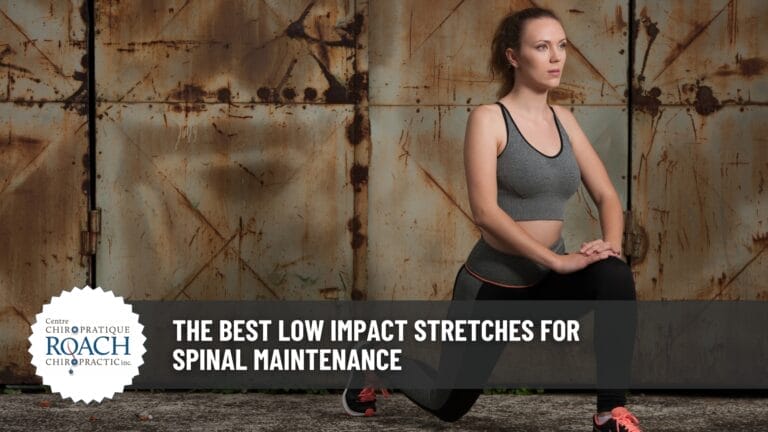A Simple Approach to Achieve Overall Pain Relief

The 1 Thing to Do for Overall Pain Relief: Effective Mindfulness and Breathing Techniques
Many individuals seeking relief from various forms of pain are discovering that traditional methods such as medication and physical treatments may not fully meet their needs. For residents in Bedford, NS, Halifax, NS, Dartmouth, NS, and surrounding areas, natural and holistic approaches are becoming increasingly popular. One effective method for overall pain relief is the combination of mindfulness meditation and controlled breathing exercises. These techniques aim not only to alleviate pain but also to improve quality of life by harnessing the body’s natural ability to self-regulate and heal. In this article, an experienced chiropractor and wellness advisor explains how these techniques work, the science behind them, and practical steps to integrate them into daily routines for enhanced pain management.
The article is organized into several sections. First, it explains the most effective method for overall pain relief and how combining mindfulness and controlled breathing therapies can revolutionize pain management. The content then details step-by-step techniques for practicing mindfulness meditation, explores the benefits of controlled breathing in pain relief, and examines the mind-body connection. It also discusses common challenges that may occur when starting these practices and reviews products and services available to support them. Finally, real-world experiences highlight the transformative influence of mindfulness and breathing on pain management.
Transitioning now to the detailed discussion on how these natural techniques can significantly reduce pain, improve mental clarity, and empower patients to take charge of their wellness.
What Is the Most Effective Method for Overall Pain Relief?
The most effective method for overall pain relief combines mindfulness meditation with controlled breathing exercises. This integrated approach engages both the mind and body in a process that mitigates pain signals and improves how the nervous system responds to discomfort. By focusing on the present moment and regulating the breath, individuals can reduce stress, lower blood pressure, and lessen the intensity of pain perception.
Mindfulness meditation reduces pain by fostering non-judgmental awareness of physical sensations and emotional responses. It helps the brain reframe pain signals and lessen the emotional distress often linked with chronic conditions. Meanwhile, controlled breathing influences the autonomic nervous system to lower stress hormones like cortisol and boost endorphin production—the body’s natural painkillers. Clinical settings have shown that this combination can decrease reported pain levels by around 30% after several weeks of consistent practice.
This method promotes a holistic healing environment where improvements in physical symptoms, mood, and sleep quality are experienced. By forming a self-regulation system, mindfulness and controlled breathing empower patients to work through pain instead of being overwhelmed by it. These techniques are accessible, cost-effective, safe, and adaptable to various lifestyles, which is why healthcare professionals – including chiropractors – are integrating them into comprehensive pain management programs.
How Can You Practice Mindfulness Meditation for Pain Relief?
Practicing mindfulness meditation for pain relief involves structured steps that help individuals develop focus and self-awareness. It requires no special equipment and can be practiced in a quiet space at home, in a clinic, or during a break.
What Are the Step-by-Step Techniques for Beginners?
For beginners, the first step is choosing a quiet location with minimal interruptions. Sitting comfortably, the practitioner is advised to close their eyes and focus on the present moment. The primary technique is to observe the natural rhythm of the breath without trying to change it, paying attention to sensations such as air entering and leaving the nostrils or the rising and falling of the chest.
Next, individuals should acknowledge any pain or discomfort without judgment. By mentally labeling sensations (e.g., “tightness,” “throbbing,” or “pressure”) and then returning focus to the breath, the practitioner develops a detached awareness that reduces the emotional impact of pain.
Incorporating a brief body scan is also effective. Starting at the toes and moving upward, the individual pays attention to bodily sensations—both pleasant and painful. Over time, this routine enhances bodily awareness and builds resilience against pain triggers.
Beginners should start with meditation sessions lasting 10 to 15 minutes, gradually increasing duration to 20 or 30 minutes as concentration and comfort grow.
How Long Should Each Meditation Session Last for Best Results?
For optimal benefits, sessions should last between 15 and 30 minutes. Consistency is essential; daily practice can lead to significant improvements in pain perception and emotional well-being. Clinical studies suggest measurable improvements in pain management after 8 to 12 weeks of regular practice. Flexibility is also important, as some days may require longer sessions during heightened pain while shorter sessions may suffice on calmer days.
Which Tools and Resources Support Effective Meditation Practice?
A variety of tools enhance mindfulness meditation. Guided meditation apps (e.g., Headspace or Calm) offer structured sessions for pain relief, while audio recordings and podcasts provide cues to maintain focus. Physical aids like meditation cushions, supportive seating, and ambient music therapy further contribute to a comfortable practice environment.
Local mindfulness training workshops and classes also offer structured guidance and community support, with many health clinics and wellness centers incorporating mindfulness training into their pain management programs.
What Are the Benefits of Controlled Breathing for Pain Relief?
Controlled breathing exercises produce a range of benefits in pain relief by altering the body’s physiological responses. Focusing on slow, deep, and rhythmic breathing shifts the body from the sympathetic (fight-or-flight) state to the parasympathetic (rest-and-digest) state, thereby reducing stress and associated pain symptoms.
How Does Controlled Breathing Affect the Nervous System?
Controlled breathing directly influences the autonomic nervous system, which regulates functions such as heart rate, digestion, and respiration. Deep breathing stimulates the vagus nerve, critical for damping the stress response. This leads to a reduction in stress hormones like cortisol and adrenaline. Research indicates that such reductions can lower heart rate variability by around 20%, a marker of diminished stress and pain perception.
This modulation not only reduces pain sensation but also enhances overall physiological balance. As calm prevails, the mind can reinterpret discomfort in a less threatening manner. Essentially, controlled breathing provides the nervous system an opportunity to recalibrate and build resilience, supporting long-term healing.
What Are the Best Breathing Exercises for Different Types of Pain?
Several breathing techniques have proven effective for pain management:
- Diaphragmatic Breathing – Involves deep breathing into the abdomen to increase oxygen intake and engage the parasympathetic system.
- Box Breathing – Also known as four-square breathing, it involves equal counts for inhaling, holding, exhaling, and holding again. It creates a rhythmic pattern that may lower anxiety and improve focus.
- 4-7-8 Breathing – Entails inhaling for 4 seconds, holding for 7 seconds, and exhaling for 8 seconds, promoting deep relaxation.
- Alternate Nostril Breathing – Involves alternating breaths through each nostril to balance the brain’s hemispheres and stabilize the body’s response to pain.
- Progressive Relaxation with Breath Control – Combines breathing exercises with muscle relaxation to systematically release tension.
Each technique offers benefits depending on the type of pain. For example, diaphragmatic breathing may ease tension headaches, while box breathing can be more useful for chronic back pain by managing stress.
Can Breathing Exercises Be Used Anytime for Immediate Relief?
Yes, breathing exercises are versatile and can be used for immediate pain relief anywhere—at home, work, or during travel. Even a few minutes of deep breathing can lessen pain intensity. Many patients report noticeable pain reduction almost immediately after practicing controlled breathing. These techniques are safe for long-term use and can serve as both preventive measures and remedial strategies.
By incorporating controlled breathing, individuals can address pain in the moment, reduce reliance on medications, and improve overall pain management. When paired with mindfulness meditation, this approach targets pain from physiological, psychological, and emotional angles.
How Does Mind-Body Connection Influence Overall Pain Relief?
The mind-body connection is crucial for overall pain relief, as it merges mental and physical processes to modulate pain intensity and inflammation. Engaging the mind through mindfulness and controlled breathing can alter physiological responses and lessen pain.
What Is the Science Behind the Mind-Body Approach to Pain?
The science of the mind-body approach centers on neuroplasticity—the brain’s capacity to reorganize in response to new experiences. Regular practice of mindfulness and controlled breathing helps create new neural pathways that improve pain tolerance and reduce pain perception. Functional MRI studies have documented decreased activity in brain areas responsible for pain processing, such as the anterior cingulate cortex and the prefrontal cortex.
Additionally, this connection promotes the release of endogenous opioids like endorphins and enkephalins, which naturally alleviate pain. Over time, the mind becomes adept at modulating pain signals, serving as a self-regulating mechanism that supports overall well-being.
How Does Stress Impact Pain Levels and How Can Meditation Help?
Stress is a significant factor heightening pain, as it leads to muscle tension, inflammation, and amplified pain signals. Through mindfulness meditation, individuals can identify and manage stress triggers, which in turn reduces muscle tension and inflammation. Regular practice lowers stress hormone levels, thereby decreasing pain intensity. Rather than masking pain with medications, addressing stress through mindfulness empowers patients to manage pain holistically.
What Lifestyle Changes Complement Mindfulness for Pain Management?
Complementary lifestyle changes can enhance the benefits of mindfulness and breathing techniques. Regular physical exercise, balanced nutrition, and good sleep hygiene support the body’s healing processes. Gentle activities like yoga and tai chi promote both physical flexibility and a harmonious mind-body connection. Dietary interventions rich in antioxidants and anti-inflammatory nutrients further reduce systemic inflammation. Establishing a consistent sleep schedule is vital, as restorative sleep aids brain repair and balances the nervous system. Together, these lifestyle adjustments foster an optimal environment for pain relief and overall quality of life improvements.
What Are Common Challenges When Starting Pain Relief Meditation and Breathing?
Beginning any new wellness practice can present challenges. When integrating mindfulness meditation and controlled breathing, individuals may face obstacles that hinder progress if not properly addressed.
How to Overcome Difficulty in Focusing During Meditation?
A common challenge is difficulty concentrating due to wandering thoughts or distractions. Guided meditations are commonly recommended with auditory cues to help anchor the mind. Setting aside a dedicated, interruption-free time and space reinforces focus. Techniques such as counting breaths, using a mantra, or visualizing calming scenes can further enhance concentration. Over time and with consistent practice, focus gradually improves.
What if Pain Increases During Initial Practice?
Some individuals may experience a temporary increase in pain during early practice due to heightened awareness of discomfort. Although this can be alarming, it is usually temporary. Health professionals advise observing sensations without judgment and allowing the pain to subside as relaxation deepens. Adjusting session intensity—by shortening sessions or using movement-based meditation—can help. Consulting a mindfulness instructor or pain management specialist provides additional guidance during this phase.
How to Stay Consistent With Daily Practice for Long-Term Relief?
Consistency is key for long-term benefits. Busy schedules, fluctuating pain, and external stressors can interrupt regular practice. Setting small, achievable goals, such as five to ten minutes of daily practice, can help build a habit that gradually extends over time. Digital reminders, support groups, and local meditation classes can also boost commitment. Keeping a journal to document improvements in pain and mood reinforces progress and motivation.
Which Products and Services Enhance Mindfulness and Breathing for Pain Relief?
A variety of products and services can support mindfulness and controlled breathing practices. These range from physical accessories to digital tools that improve meditation and track progress, making it easier to integrate these practices into daily routines and achieve better pain relief.
What Are the Best Meditation Cushions and Accessories?
High-quality meditation cushions like zafus, bolster pillows, and floor mats provide essential support for prolonged, comfortable sessions. Ergonomic designs ensure proper spinal alignment, which is especially important for individuals with chronic back or neck pain. Many products offer adjustable heights and removable covers for easy maintenance, helping create a dedicated and inviting meditation space.
How Can Wearable Technology Track and Improve Your Practice?
Wearable devices such as smartwatches and fitness bands offer heart rate variability sensors, stress monitoring, and guided breathing applications. These tools provide real-time feedback, helping users identify optimal breathing patterns and track progress over time. By monitoring changes during deep breathing sessions, wearables empower individuals to refine their techniques for improved long-term outcomes.
When Should You Consult Pain Management Specialists or Therapists?
While mindfulness and breathing techniques benefit many, some cases require professional guidance. If pain remains unmanageable or new symptoms develop, consulting a pain management specialist or therapist is recommended. Regular check-ins can offer additional emotional support and help adjust mindfulness practices as needed. For severe chronic pain or psychological distress, a multidisciplinary approach that includes physical therapy, nutritional support, and medical treatment may be necessary for lasting relief.
What Do Professionals and Users Say About Mindfulness and Breathing for Pain Relief?
Both clinical research and personal testimonials support the effectiveness of combining mindfulness meditation and controlled breathing for pain management. Most professionals agree that these practices, when performed consistently, can significantly transform pain experience.
What Research Supports These Techniques for Pain Relief?
Numerous studies in neurology and pain management have documented that mindfulness meditation can substantially reduce pain intensity while improving mood. Research has shown decreases in chronic pain levels by up to 30% among participants practicing mindfulness-based stress reduction (MBSR). Similarly, controlled breathing has been linked to lower cortisol levels and improved heart rate variability. Together, these techniques provide a synergistic effect that enhances overall quality of life for those managing chronic pain conditions.
How Have Users Experienced Relief Through Mindfulness and Breathing?
Anecdotal evidence supports scientific findings. Many patients report noticeable decreases in pain and improvements in daily functioning after incorporating these practices. Testimonials highlight benefits such as increased mental clarity, enhanced stress management, and better sleep quality. For many, the empowerment gained from managing pain through mindfulness creates a positive feedback loop, further reinforcing regular practice.
What Do Pain Management Professionals Recommend?
Pain management specialists strongly advocate for the use of mindfulness meditation and controlled breathing as complementary therapies. While these techniques may not replace traditional medical treatments, they substantially enhance overall pain relief when integrated into a comprehensive care plan that may include physical therapy, chiropractic care, and nutritional interventions. Professionals emphasize that addressing both the mental and physical aspects of pain is crucial for sustainable improvement.
Additional Resources and Comparative Data
To support the information provided, the table below summarizes various mindfulness and breathing techniques, their key benefits, and practical usage recommendations.
In addition, consider these five tips for integrating mindfulness and breathing practices into your routine:
- Establish a Dedicated Practice Space – Create an environment free of distractions.
- Set a Routine – Practice at the same time each day to build a habit.
- Utilize Technology – Use apps and wearables to monitor progress.
- Join a Community – Connect with local or online groups for support.
- Monitor Your Progress – Keep a journal to track improvements in pain and mood.
Frequently Asked Questions
Q: How quickly can I expect to experience pain relief from mindfulness and breathing techniques? A: Many individuals report immediate benefits, such as reduced stress and improved focus, within minutes. For sustained pain relief, consistent daily practice over 6–12 weeks is recommended, with studies showing up to a 30% reduction in chronic pain levels.
Q: Are there any risks associated with practicing mindfulness meditation and controlled breathing? A: These techniques are generally safe and non-invasive. Some beginners may experience temporary discomfort or heightened pain awareness, but this typically subsides with practice. Those with severe medical conditions should consult a healthcare provider before starting.
Q: Can I incorporate these techniques into my existing pain management routine? A: Yes, mindfulness and controlled breathing complement traditional treatments like chiropractic care and physical therapy by enhancing the mind-body connection and reducing stress.
Q: How do I choose which breathing exercise is best for my type of pain? A: The choice depends on the nature and intensity of your pain. For example, diaphragmatic breathing works well for acute pain and tension, while box breathing and the 4-7-8 method help manage chronic stress-related pain. Experimenting under professional guidance can help determine the best fit.
Q: Are there any products available that can help enhance my mindfulness and breathing practice? A: Absolutely. Products such as meditation cushions, ergonomic pillows, guided meditation apps, and wearable devices that track heart rate variability and stress can provide structure and real-time feedback to optimize your practice.
Q: What makes the combined approach of mindfulness and controlled breathing so effective for pain relief? A: This approach addresses multiple dimensions of pain. Mindfulness alters the brain’s perception by fostering non-judgmental awareness, while controlled breathing modulates the autonomic nervous system to reduce stress. Together, they bring both physical and psychological benefits.
Q: Can these techniques help with pain related to conditions like arthritis or neuropathy? A: Yes, many patients with arthritis, neuropathy, and other chronic pain disorders have experienced significant improvement through regular practice. These techniques help reduce inflammation, improve circulation, and lower stress levels—key factors in alleviating chronic pain.
By integrating mindfulness meditation and controlled breathing into daily routines, individuals suffering from various forms of pain can discover a natural, holistic path to relief. The mind-body connection helps manage and reduce pain over time, empowering patients to live healthier, more fulfilling lives. Combined with appropriate lifestyle adjustments and supportive tools, these techniques offer measurable improvements in both physical and mental well-being, making them a cornerstone of modern pain management in chiropractic and holistic care settings.
SHARE THIS






